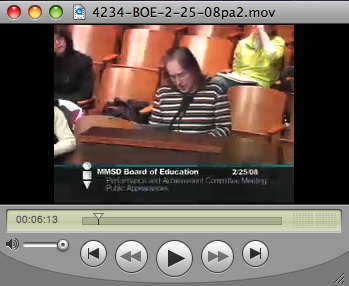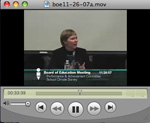On an unseasonably cold day last November in Foley, Ala., Colby Royster and Michael Peterson, two students in William Bender’s fourth-grade public-school class, informed me that the class corn snake could eat a rat faster than the class boa constrictor. Bender teaches 26 fourth graders, all boys. Down the hall and around the corner, Michelle Gay teaches 26 fourth-grade girls. The boys like being on their own, they say, because girls don’t appreciate their jokes and think boys are too messy, and are also scared of snakes. The walls of the boys’ classroom are painted blue, the light bulbs emit a cool white light and the thermostat is set to 69 degrees. In the girls’ room, by contrast, the walls are yellow, the light bulbs emit a warm yellow light and the temperature is kept six degrees warmer, as per the instructions of Leonard Sax, a family physician turned author and advocate who this May will quit his medical practice to devote himself full time to promoting single-sex public education.
Foley Intermediate School began offering separate classes for boys and girls a few years ago, after the school’s principal, Lee Mansell, read a book by Michael Gurian called “Boys and Girls Learn Differently!” After that, she read a magazine article by Sax and thought that his insights would help improve the test scores of Foley’s lowest-achieving cohort, minority boys. Sax went on to publish those ideas in “Why Gender Matters: What Parents and Teachers Need to Know About the Emerging Science of Sex Differences.” Both books feature conversion stories of children, particularly boys, failing and on Ritalin in coeducational settings and then pulling themselves together in single-sex schools. Sax’s book and lectures also include neurological diagrams and scores of citations of obscure scientific studies, like one by a Swedish researcher who found, in a study of 96 adults, that males and females have different emotional and cognitive responses to different kinds of light. Sax refers to a few other studies that he says show that girls and boys draw differently, including one from a group of Japanese researchers who found girls’ drawings typically depict still lifes of people, pets or flowers, using 10 or more crayons, favoring warm colors like red, green, beige and brown; boys, on the other hand, draw action, using 6 or fewer colors, mostly cool hues like gray, blue, silver and black. This apparent difference, which Sax argues is hard-wired, causes teachers to praise girls’ artwork and make boys feel that they’re drawing incorrectly. Under Sax’s leadership, teachers learn to say things like, “Damien, take your green crayon and draw some sparks and take your black crayon and draw some black lines coming out from the back of the vehicle, to make it look like it’s going faster.” “Now Damien feels encouraged,” Sax explained to me when I first met him last spring in San Francisco. “To say: ‘Why don’t you use more colors? Why don’t you put someone in the vehicle?’ is as discouraging as if you say to Emily, ‘Well, this is nice, but why don’t you have one of them kick the other one — give us some action.’ ”
During the fall of 2003, Principal Mansell asked her entire faculty to read “Boys and Girls Learn Differently!” and, in the spring of 2004, to attend a one-day seminar led by Sax at the school, explaining boys’ and girls’ innate differences and how to teach to them. She also invited all Foley Intermediate School parents to a meeting extolling the virtues of single-sex public education. Enough parents were impressed that when Foley Intermediate, a school of 322 fourth and fifth graders, reopened after summer recess, the school had four single-sex classrooms: a girls’ and a boys’ class in both the fourth and fifth grades. Four classrooms in each grade remained coed.
Separating schoolboys from schoolgirls has long been a staple of private and parochial education. But the idea is now gaining traction in American public schools, in response to both the desire of parents to have more choice in their children’s public education and the separate education crises girls and boys have been widely reported to experience. The girls’ crisis was cited in the 1990s, when the American Association of University Women published “Shortchanging Girls, Shortchanging America,” which described how girls’ self-esteem plummets during puberty and how girls are subtly discouraged from careers in math and science. More recently, in what Sara Mead, an education expert at the New America Foundation, calls a “man bites dog” sensation, public and parental concerns have shifted to boys. Boys are currently behind their sisters in high-school and college graduation rates. School, the boy-crisis argument goes, is shaped by females to match the abilities of girls (or, as Sax puts it, is taught “by soft-spoken women who bore” boys). In 2006, Doug Anglin, a 17-year-old in Milton, Mass., filed a civil rights complaint with the United States Department of Education, claiming that his high school — where there are twice as many girls on the honor roll as there are boys — discriminated against males. His case did not prevail in the courts, but his sentiment found support in the Legislature and the press. That same year, as part of No Child Left Behind, the federal law that authorizes programs aimed at improving accountability and test scores in public schools, the Department of Education passed new regulations making it easier for districts to create single-sex classrooms and schools.

